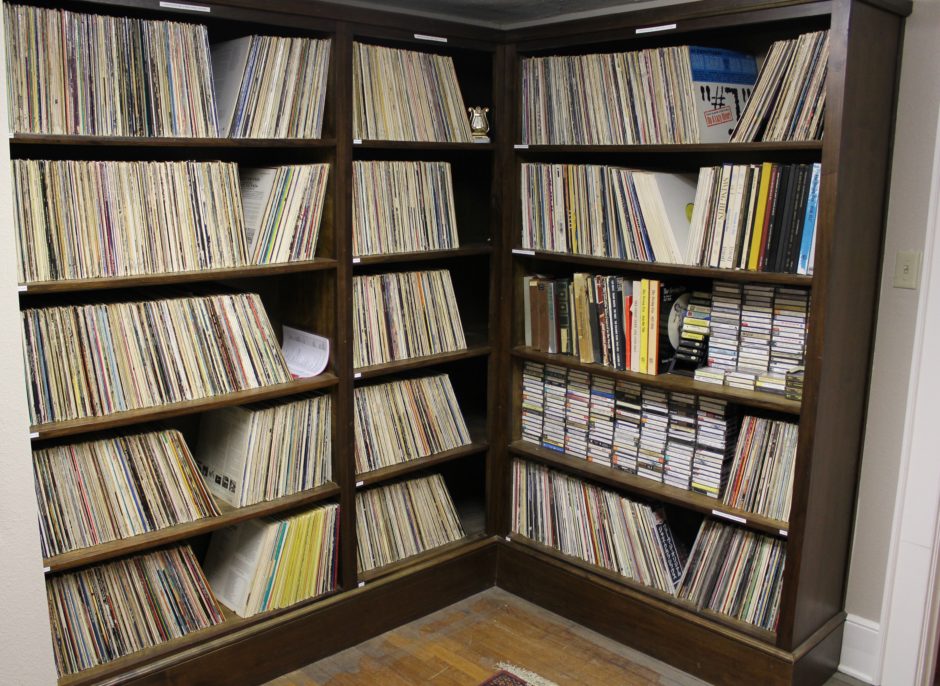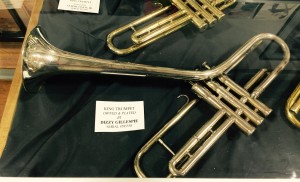
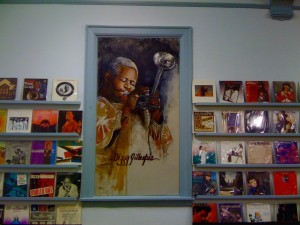
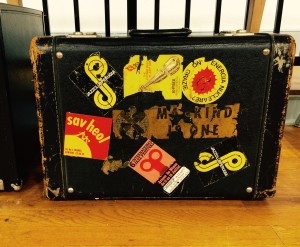
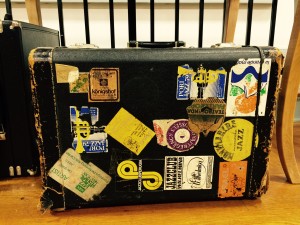
The idea of having a jazz museum was born on October 22, 2005 at about 3 P.M. I was in the pit playing the matinee of the Broadway show Wicked. It was the day before my last day of a 25-year career playing Broadway shows. Because of age and scar tissue on my lip, I was retiring from all I had ever wanted to do, and after three years of planning my next move, I still had no idea what could replace my love of playing. There were many things I could do, but nothing else that I would have such passion for. Above all else, I didn’t want my years spent learning and performing music to be just a dead end.
By the end of the first half of the show, I had the answer. It came as I was reading a book (on the breaks in between tunes) about Stan Kenton. I wondered to myself why someone didn’t do more to educate the public about the popularity of the Kenton band in the 50s, and a loud voice in my mind said, “You do it”. It as so loud that I looked around to see if anyone else heard it, but no one looked my way.
Another strange thing happened at the moment I heard the voice; I saw my life up to that point pass by in a fraction of a second, showing me that everything I had experienced up to that point had been a learning experience for running a jazz museum, not a dead end. I felt embarrassed I had just spent three years of intellectual decision making, only to come up with nothing. The voice had pointed the way forward, to the only way I could find happiness.
So where do you start building a jazz museum? I had the building, some knowledge, some money put away, but nothing to put into the museum. How do you find museum items that are really worth preserving? It’s not that easy, and even if you do know what you want you can’t find it that easily. I had nothing but an idea for a month, but it didn’t matter. I knew I had some record albums I had been buying over the years, if nothing else.
I learned a month later that the items would find me. The museum would build itself based on what came to me in the market place. It, for some reason, wanted to be a trumpet museum.
In November of 2005, I somehow, maybe on eBay, found a Dizzy Gillespie trumpet being auctioned by a company in Virginia. I learned that I could bid live online at home on the day of the auction. I had never done anything like that, but I decided that Dizzy Gillespie trumpet should be the first major item in the jazz museum; a fitting first item since he was such a major force in jazz history.
I was worried the day of the auction that if I bid too early when the trumpet came up it might drive up the price, so I wanted to wait and jump in late. The starting price was $6,000, and I had no idea what it should sell for—-maybe $6,000?
As the lot with the trumpet came up, I waited a few seconds before pressing my mouse to bid. To my surprise, they had taken the lot down and had moved on to another item. I didn’t know what had just happened, but I lost the trumpet by waiting too long. I decided to move on.
The next morning, however, I had nagging feeling I should call the auction company and tell them I didn’t like how fast they took down that lot. I also wanted to know what it sold for, if anything.
The auction company mainly sold antiques, so a musical intrument like Dizzy’s trumpet was not something their buyers were looking for. They told me they didn’t get any bids, so I asked if I could buy it, wondering if they would laugh at a rookie like me. They told me what the reserve was that the seller wanted and what the buyer’s premium would be. They said the trumpet could be sold for that amount, the lowest I could have possibly have gotten it for, since there had been no bidders to drive up the price. Without a second thought, I said, “I’ll buy it”. Dizzy was the first in the museum, and I learned later that his birthday was October 21st, not quite October 22, but close enough for me to notice.
Dizzy had been from South Carolina originally and had donated his trumpet to a charity there in 1984, and that charity sold the trumpet in an auction. Whoever bought his trumpet in 1984 was the seller in the auction in 2005 where I bought it. It was a trumpet Dizzy had played all over the world from about 1978-1984. The serial number on the horn bears that out.
We were off and running with our museum and Dizzy Gillespie was the first; the co-founder of bebop. The trumpet came with its original case, including an assortment of decals from his travels all over the world. This was the real deal, not a next to new horn he might have given away. He really played this one, and it shows. It is a marvelous piece of jazz history. Dizzy Gillespie (October 21, 1917-January 6, 1993).
